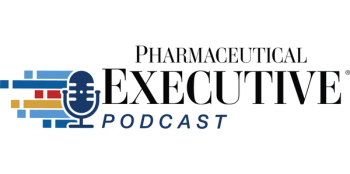- Pharmaceutical Executive: October 2025
- Volume 45
- Issue 8
Elevate Earned Media Through Continuing Education
Tips for turning transactional outreach into a trusted working relationship.
The demand for veterinary continuing education has accelerated in recent years due to such factors as the growth of specialized animal care and the rapid pace of new research and technologies. Bob Alaburda, Associate Editorial Director at
What makes a veterinary-medicine company or story stand out to media brands?
Alaburda: As editorial director at dvm360, the stories that rise to the top for me are those that do three things clearly and quickly: they are relevant to our clinical or practice-management audience, they provide verifiable data or research, and they give access to a credible on-the-record expert who can explain the implications to our audience. Stories get coverage faster when they connect a company announcement to a broader trend or a practical decision vets actually make.
How can these companies better tailor their outreach to align with your publication’s audience/editorial mission?
Alaburda: Read our site and try to align your pitch with what our readers use (clinical takeaways, CE implications, practice ROI, workflow changes). Trade publications want trend plus utility, not product brochures. Frame your news as why it matters to a practicing veterinarian, technician, or staff, and offer visuals or short data tables we can drop into an article.
Try to distill your overarching message into one to two sentences that answer “so what?” for a clinician. Bonus points if you can connect us with an expert who can answer questions or even jump on Zoom for a video interview.
What are the most common mistakes you see in press pitches or media outreach?
Alaburda: The top offenders are overhyped product pitches, lack of context (no explanation of the relevance for practitioners), and no data or unverifiable claims. Tidy, factual releases with references make it easy for an editor to verify claims, which builds trust. We cannot appear to endorse a product or service, so efforts spent on spin and superlatives are wasted. It just makes our job take longer, which erodes that trust.
Are there particular topics, trends, or types of data that you believe are underutilized by industry communicators seeking earned media?
Alaburda: Yes. Real-world evidence and data are massive opportunities that many companies underuse in media outreach. Beyond randomized-trial headlines, stories built on registry data, practice database analyses, patient outcomes, or cost-of-care insights resonate with clinicians and practice managers because they show how therapies perform in everyday practice and how they affect workflow or business decisions. Framing those analyses as actionable insights rather than marketing claims is key.
Other underplayed angles include operational impact (how a new drug or technology changes clinic flow); implementation case studies from practices; post-market safety or monitoring findings; and patient-experience metrics.
How do you recommend veterinary-medicine and pharma companies build long-term relationships with editorial teams beyond just pitching stories?
Alaburda: Think long term and be a resource. Offer timely, exclusive data, provide multimedia assets (images, charts, short video clips), and follow up respectfully—but do not pester. Invite editors to educational briefings/events, offer transparent access to subject-matter experts, and deliver on promises. Over time, being reliable, accurate, and helpful turns transactional outreach into a trusted working relationship.
Articles in this issue
2 months ago
Price Checks2 months ago
Bob Mauch: Strengthening the ChainNewsletter
Lead with insight with the Pharmaceutical Executive newsletter, featuring strategic analysis, leadership trends, and market intelligence for biopharma decision-makers.




